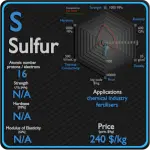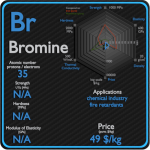This article contains comparison of key thermal and atomic properties of sodium and magnesium, two comparable chemical elements from the periodic table. It also contains basic descriptions and applications of both elements. Sodium vs Magnesium.
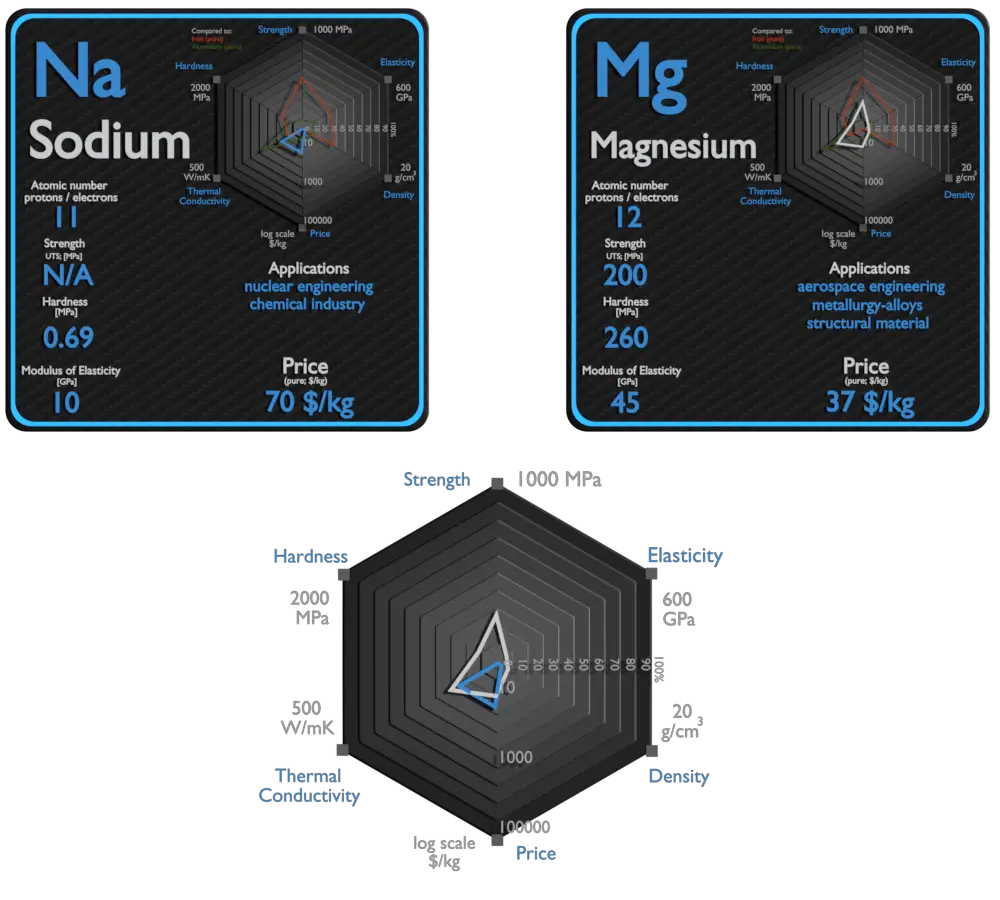
Sodium and Magnesium – About Elements
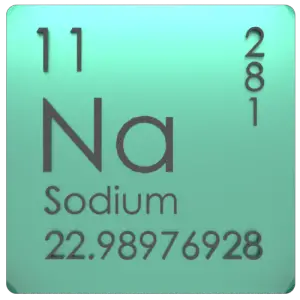
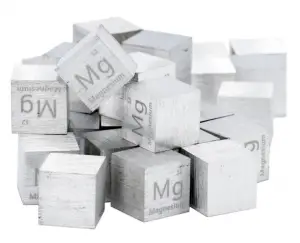
Source: www.luciteria.com
Sodium and Magnesium – Applications
Sodium
Metallic sodium is used mainly for the production of sodium borohydride, sodium azide, indigo, and triphenylphosphine. A once-common use was the making of tetraethyllead and titanium metal; because of the move away from TEL and new titanium production methods. An electric current and sodium vapor combine to form a yellowish glow. This principle is used for the making of sodium vapor lamps. Sodium is occasionally used as a heat exchange medium in nuclear power plants. Liquid sodium is sealed into pipes surrounding the reactor core. Generated heat is absorbed by sodium and forced through the pipes in a heat exchanger which can be used to generate electricity.
Magnesium
Magnesium is the third-most-commonly-used structural metal, following iron and aluminium.[35] The main applications of magnesium are, in order: aluminium alloys, die-casting (alloyed with zinc), removing sulfur in the production of iron and steel, and the production of titanium in the Kroll process. Magnesium alloys are used in a wide variety of structural and nonstructural applications. Structural applications include automotive, industrial, materials-handling, commercial, and aerospace equipment. Magnesium alloys are used for parts that operate at high speeds and thus must be light weight to minimize inertial forces. Commercial applications include hand-held tools, laptops, luggage, and ladders, automobiles (e.g., steering wheels and columns, seat frames, transmission cases). Magnox (alloy), whose name is an abbreviation for “magnesium non-oxidizing”, is 99% magnesium and 1% aluminum, and is used in the cladding of fuel rods in magnox nuclear power reactors.
Sodium and Magnesium – Comparison in Table
| Element | Sodium | Magnesium |
| Density | 0.968 g/cm3 | 1.738 g/cm3 |
| Ultimate Tensile Strength | N/A | 200 MPa |
| Yield Strength | N/A | N/A |
| Young’s Modulus of Elasticity | 10 GPa | 45 GPa |
| Mohs Scale | 0.4 | 2.5 |
| Brinell Hardness | 0.69 MPa | 260 MPa |
| Vickers Hardness | N/A | N/A |
| Melting Point | 97.8 °C | 649 °C |
| Boiling Point | 883 °C | 1090 °C |
| Thermal Conductivity | 141 W/mK | 156 W/mK |
| Thermal Expansion Coefficient | 71 µm/mK | 24.8 µm/mK |
| Specific Heat | 1.23 J/g K | 1.02 J/g K |
| Heat of Fusion | 2.598 kJ/mol | 8.954 kJ/mol |
| Heat of Vaporization | 96.96 kJ/mol | 127.4 kJ/mol |








